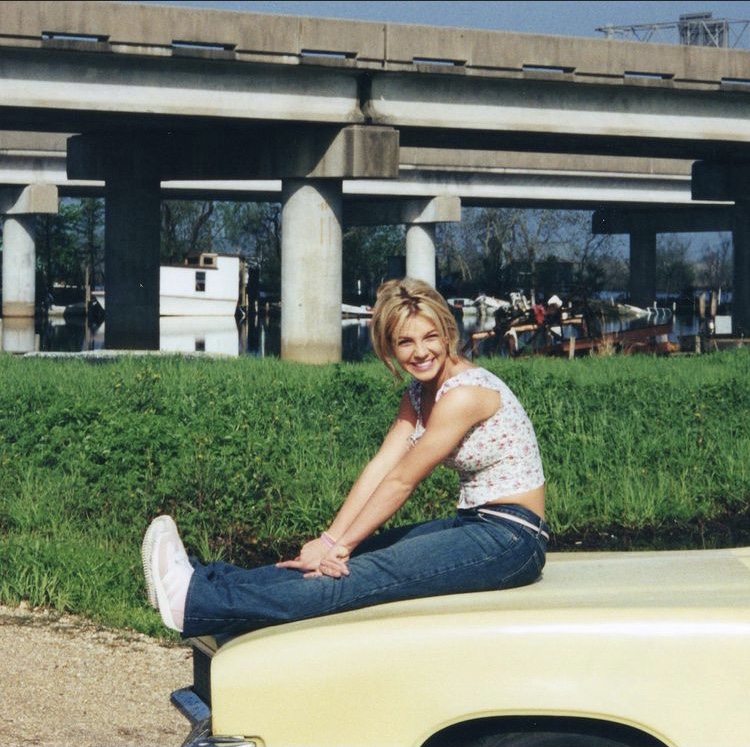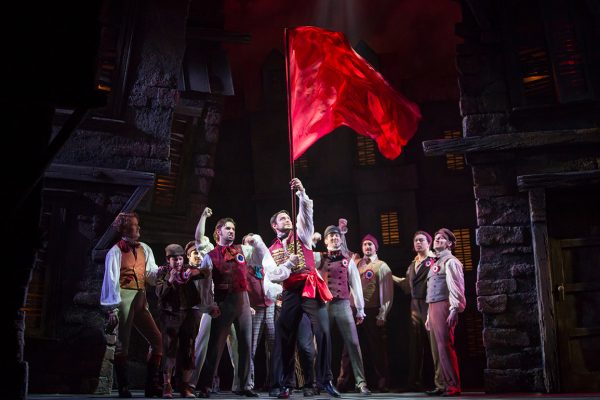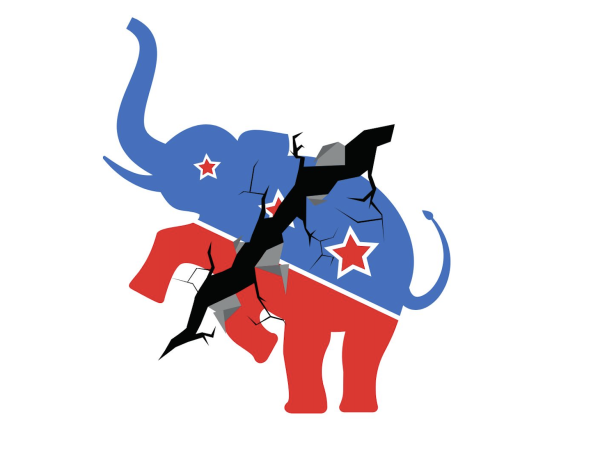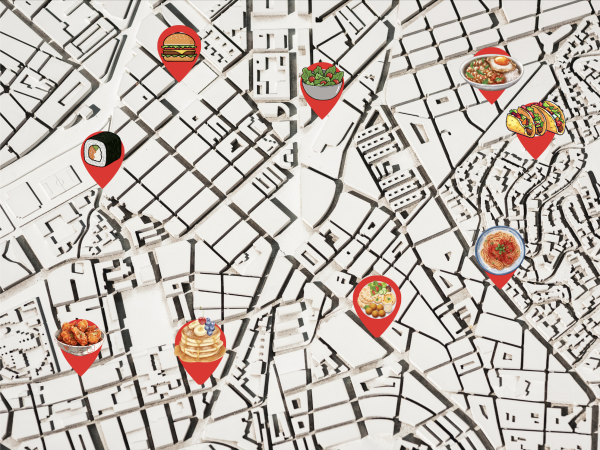‘Framing Britney Spears’: a look into the injustices facing the iconic pop star
March 2, 2021
“The New York Times Presents: Framing Britney Spears” documentary, a deep and straight-forward dive into the elusive life and career of Britney Spears, premiered Feb 5. on FX and Hulu.
There have been few popstars so iconic and so impactful to as many people as Britney Spears has been in her unbelievable career, so it only makes sense that people have been interested in the personal life of the star during her past few years of borderline radio silence.
The public has grown increasingly concerned and interested in the conservatorship of Britney, a 39-year-old who has performed and created albums within the time of this conservatorship.
Britney’s cryptic Instagram posts combined with the questionable and mysterious conservatorship situation have caused many people to be concerned.
The documentary began with important Miriam-Webster definitions of what a conservator is: 1. “One that preserves from injury or violation; protector,” and 2. “A person, official, or institution designated to take over and protect the interests of the incompetent.”
The special then panned to a snapshot of the present day, displaying a crowd of people outside the courthouse where the battle for Britney’s independence was ensuing.
Protestors explained that Spears has been in a conservatorship under her father, Jamie Spears, for 12 years and that she was in court hoping to take away her father’s control of her career, life and finances.
These introductory scenes then posed a new question: “how did we get here?” as the narrative goes back in time to when Britney was a child.
The documentary is composed of many short confessional-like interviews with people who were close to Britney, as well as editors and writers from the Times that were incredibly well-versed in the life of the popstar.
View this post on Instagram
Felicia Culotta, Britney’s close friend and former assistant, kicked off the look into Britney’s past by saying she “doesn’t understand a conservatorship for someone of Britney’s age or ability.” Culotta has known Britney since she was five and was able to give insight into the popstar’s childhood.
Britney Spears is from Kentwood, Louisiana, a small town in the middle of the Bible belt where she began publicly singing in the church choir.
Her talent was evident from the beginning of her life, but her parents did not know what to do with such talent at such a young age. Jamie and Lynne Spears eventually contacted a children’s talent agent, Nancy Carson, who took Britney on.
Carson was interviewed for the documentary and explained that Britney moved to New York City with Lynne to work on vocal and acting lessons.
Carson explained with pride how remarkable of a child Britney was, and how all of the rehearsals ultimately led to her “Mickey Mouse Club” audition.
After the show, her family was financially unable to continue making round trips to NYC from Louisiana, so Britney went to high school at home for two years. She lived life as a “normal,” teenager, playing basketball and becoming involved in school.
In 1997, Britney got her first record deal after making demos and expressing interest in being a singer.
Her mother was unable to travel with her due to having her younger daughter at home to take care of, and asked Culotta to accompany her in NYC as she began her career.
Culotta agreed to work with her for three months, but ended up working with her for 23 years and counting.
Britney’s father, Jamie, was described as not being very involved in her career or life. He struggled with alcoholism when she was younger and filed for bankruptcy after many failed business and career ventures.
Kim Kaiman, who was the director of marketing at Jive Records, stated that Jamie had only spoken to her once and said, “My daughter’s going to be so rich she’s gonna buy me a boat.”
In 1998, Britney was preparing her first record release. Her first single was “…Baby One More Time,” which was a smash hit that remains one of the most iconic debut singles in history.
The young star began by performing in malls, and soon, people began to seek her out, forming crowds at her performances.
Producers and music industry moguls were all impressed by the maturity and determination Britney brought to her work immediately.
“…Baby One More Time” hit number one on the charts and her fame began to skyrocket. She was a completely new type of popstar that rewrote the rules of what it means to be a young woman.
The music video for the song is one of the most iconic videos in history, and the school girl’s uniform and pigtails Britney adorned pushed boundaries on how young women in music can act and dress.
Wesley Morris, the Times Critic at Large, said that she owned the hallway, explaining, “It’s not the sex that’s cool, it’s her control over herself that was cool.”
She symbolized the plight of many teenage girls who were not exactly children, but not exactly adults who still wanted that representation.
Spears’s fame was an interesting and fantastic phenomenon because this was an era where boy bands were at the forefront of the music industry.
Even from the time she was a child, she was constantly questioned about boys and people were persistently critical of her freedom of expression and sexuality.
Morris brought up that Britney came into the public eye as a popstar in the midst of the Clinton-Lewinsky scandal, a charged moment in American history that brought sex, a taboo topic in American culture, to the forefront.
The Critic at Large made the connection that the American public’s interest in Britney’s persona and sexuality was due to this scandal opening up even greater criticism to women’s sexuality.
Britney went on many interviews where the person interviewing would only ask about sex, one interviewer even asked about her breasts; “You seem to get furious every time an interviewer comes up with this subject,” they said.
There were many deeply uncomfortable clips of grown men and women alike criticizing the way Britney dresses, performs and the content of her music.
She was always under scrutiny, those close to her said, and in turn, she became more free-spirited and stopped trying to please everyone.
Despite how the interviews tried to paint Britney out to be the stereotype of a clueless young girl, she was described as being in control of everything in her performances and was a deeply creative person who knew what she wanted.
A backup dancer, Kevin Tancharoen, remembered his time at rehearsals; “She was the one who knew what she wanted to do and she would make that happen, or her people would make that happen for her.”
In a haunting clip, an interviewer asked how she gets control over her life and Britney calmly replied, “That’s why I am where I am today. Because I do have control.”
View this post on Instagram
Again, in a display of the deep-rooted sexism that loomed over Britney’s career, she was ruthlessly attacked and asked about her relationship with Justin Timberlake; they were regarded as an all-American celebrity couple that people could gossip about.
In one of the most uncomfortable interviews of the entire documentary, someone asks Britney if she is a virgin, something that would never be asked of her male counterparts.
When the couple broke up, Britney was villainized immediately, with people claiming she cheated on Timberlake.
Timberlake then did an entire revenge music video about Britney that clearly weaponized their relationship, and was never asked if he did anything that may have contributed to the end of the relationship.
On ABC’s “Primetime Thursday” in 2003, Britney did an interview about her relationship with Timberlake.
The interviewer shamed Britney from the jump, saying that Timberlake had told the world that she broke his heart, and pointedly asked, “What did you do?”
As the interview continues with a tearful Britney, they play a clip of Kendall Ehrlich, wife of the former governor of Minnesota, saying, “If I had an opportunity to shoot Britney Spears, I would.”
The interviewer even validates Ehrlich’s statement, saying Britney was a bad influence on many mother’s children.
Britney eventually stopped the interview as she sobbed when asked about how difficult the past year had been on her.
In 2004, Britney got engaged to her then-boyfriend Kevin Federline. Their marriage was widely discussed in tabloids and on television, usually with Britney being portrayed in a negative light.
Brittain Stone, photo director of US Weekly (2001-2011), was interviewed for the documentary and explained that during this time in history, more and more photographers were joining the paparazzi.
Photos of Britney sold for up to 1 million dollars each; she was surrounded all the time. The young star was friendly to them at first and seemed to enjoy the paparazzi attention, who described her as “sweet.”
After Britney announced her pregnancy on “Ellen,” and once she had her baby, the paparazzi exploded. Immediately, tabloids believed she was an unfit mother, constantly taking photos of her doing things to capture faux moments where Britney could be construed to be a “bad mom.”
Two famous photos include Britney tripping with her son in one arm and a glass of water in the other and a photo of her driving with her baby in her lap.
On NBC’s “Dateline” in June 2006, a pregnant Britney Spears sat down with the host Matt Lauer, to discuss the tabloid accusations.
In this interview, she spoke about her son being on her lap in the car and stated that she was going to Starbucks and was terrified as paparazzi surrounded her, so she grabbed her baby to go home. She further explained that her father used to drive with her in his lap.
Britney had two kids within a very short time (just over a year) and there was a lot of speculation over Federline and Britney’s relationship.
After her second child was born, she got divorced and filed for sole custody of her kids, as did Federline. Her mother, Lynne, later wrote in her book that she believed Britney was suffering from postpartum depression.
In the interview she breaks down in tears saying she doesn’t know how to stop the paparazzi, breaking the hearts of anyone watching the incredibly lost and terrified-looking young woman.
People became unhealthily and sickeningly fascinated by her “unraveling,” and she was relentlessly attacked by paparazzi.
The documentary showed strings of videos where Britney is shown repeating “I’m scared, I’m scared” and other videos where she has her hands over her mouth, wide-eyed, as paparazzi surround her.
In 2007, Britney publicly underwent a mental health crisis. The tabloids and media famously grabbed ahold of the moment that Britney went into a hair salon and asked to have her head shaved.
She said she was “tired of everyone touching her,” and shaved her head herself after the hairdresser refused.
The world showed no empathy to Britney Spears, with people making her the butt of every joke they possibly could, including late-night comics.
Instead of anyone thinking this was a serious mental crisis, they made fun of the young pop star and called her “crazy” frequently, writing her issues off as a joke.
On Feb. 21, 2007, another deeply troubling and formative media incident occurred.
For nearly four months, Britney and Federline had been in a battle over the custody of their two children.
A paparazzi photographer, Daniel Ramos, who was interviewed for the documentary, received a tip that Britney was visiting Federline to see her kids and was denied by Federline.
She was with her cousin at a gas station and Ramos came over to the window and asked how she was doing, saying he was concerned about her.
Federline would not open the gate for Britney so she pulled off behind a Jiffy Lube, and Ramos approached her again, asking if he could ask some questions.
Britney got out of the car and began breaking the passenger’s side window of his car with an umbrella. He took photos of the incident and sold them for a huge profit.
Ramos consistently denied that he knew what he was doing was hurting Britney’s well-being, despite being told to leave her alone for many years.
In 2007, she lost physical custody of her children but had visitation rights. Soon after, she began a relationship with Sam Lutfi, who was a “self-invented, guru-type that attaches themselves to celebrities at vulnerable moments,” according to Joe Coscarelli, a pop music reporter at The New York Times.
Lutfi was trying to insert himself into the role as Britney’s advisor and was trying to control much of her life. He answered for her in interviews and was seen by her parents as a lot of her downfall.
By 2008, she had become a frequent punchline not only in tabloids but in television, which was detailed through many clips in the documentary.
University junior Desireé Rousseau said, “I’ve seen documents about it and all I can say is how much I truly dislike her father and how society treated her when she was dealing with all of her traumas from the industry. The way she lost custody of her kids seems suspicious to me as it feels like her father has manipulated everything.”
On Jan. 3, 2008, paramedics responded to a call about a custody dispute at Britney’s home. She had refused a court order to hand over her sons, barricading herself inside.
She was rushed to the hospital overnight and the courts suspended her right to see her children at all.
Later that month, on Jan. 31, she was placed on a medical health hold. Around this time, Jamie Spears filed for a temporary conservatorship over Britney.
Friends and coworkers emphasized that Jamie was not a huge figure in her life until her hospitalizations in 2008.
Vivian Lee Thoreen was a lawyer who dealt with the conservatorship proceeding, her client being Jamie Spears. She was interviewed in the documentary and explained in more detail what conservatorships include.
She claimed that courts take conservatorships seriously and explained the different kinds of conservatorships; one where you need help with everything (what you will eat, where you will live, etc,) and one where there is a conservator of the state.
A conservator of state is needed when one is unable to manage their finances, or they are susceptible to fraud or undue influence, which was described as the main concern the family had for Britney.
Lutfi was accused in court of having control over Britney and her finances, as well as drugging her. Her parents filed a restraining order against him including those accusations, which was accepted.
One day after she was hospitalized, her dad was granted temporary conservatorship over her person and conservator of her state along with attorney Andrew Wallet.
When she was released from the hospital, Britney sought out legal guidance from Adam Streisand, a lawyer who specializes in conservatorships.
When they met at the Beverly Hills Hotel, she said, “I know what’s going on,” and that she knew she could not avoid the conservatorship, but said she did not want her dad as the conservator of either her state or person and instead wanted an independent party.
The day Streisand went to court for her, the judge said her mental examination revealed that she could not make decisions and was told he could not represent her because she was incapable of listening to him. He was not allowed to look at the report and was later dismissed from the case.
On Oct. 28, 2008, the conservatorship was made permanent. Some speculate that this was so she could see her kids as visitations resumed after conservatorship.
To get out of a conservatorship, a petition must be filed and the person must have evidence that they no longer need one. Specialists on the subjects revealed that very few people placed under a conservatorship win the right to get out of it.
During the first year of the conservatorship, “Britney For the Record” was made, a documentary about Jamie and Britney Spears at home.
The topic of conservatorship comes up one of the few times in the show and she said to the cameras that she “would feel liberated and like herself” without the constraints of lawyers and doctors.
Britney said that they do not listen to her and hear what they want to hear, a sentence that was crushing to hear.
Almost immediately after conservatorship was granted, she went back to work. She had recorded a new album by the end of 2008 and guest-starred on multiple television shows.
Felicia Culotta’s role also changed under conservatorship. She toured backstage and was no longer hired by Britney’s team, showing how little Britney now had control over her performances and team.
Britney had a media “comeback,” and began to appear virtually everywhere. She did a huge residency in Las Vegas that was wildly successful, generating $310,000 per show.
Jamie got 1.5 percent of performance and merchandise of the residency revenue as the circle of people who could interact with her daily closed in.
There haven’t been very many interviews with Britney in the past ten years, and the ones that have happened have been under the close watch of her “handlers,” as the documentary eloquently narrates.
Britney’s Instagram has also become a place of questioning, where the conservatorship was never mentioned, but odd photos, videos and captions have generated speculation.
Many people believe that her Instagram contains coded messages. The two women who host the podcast “Britney’s Gram,” Babs Gray and Tess Barkey, took an interest in her posts and what they might mean.
A montage of disturbing videos and captions that Britney has posted in which she seems completely detached from herself was presented to show interest in her social media.
In 2018, the two hosts of the podcasts found out that the other conservator, Andrew Wallet, wanted to get more money from the conservatorship.
Right after they found this out, Britney was going to announce a new residency for more than a year and do an interview.
A crowd awaited the big announcement at her residency in Las Vegas, but Britney appeared on the stage only to completely walk straight off, smiling vacantly.
She left in a limousine and 11 weeks later canceled the new residency citing her father’s recent health issues and her desire to be with her family. This cancellation was the beginning of the end of hiding the conservatorship from the public.
Britney then left Instagram and did not say anything publicly for a few months. Later, Andrew Wallet quit after having asked for a raise just months before.
With the close watch of the “Britney’s Gram” podcast, the hashtag “#whereisBritney” began.
Finally, she posted again with the odd caption: “We all need to take time for a little ‘me time.’ :)” that the hosts of “Britney’s Gram,” found very unsettling.
It was then almost immediately reported that Spears had checked herself into a mental health institution.
The two women of “Britney’s Gram” found this suspicious and speculated about whether she actually elected to go into the mental institution or was forced.
They then received an anonymous phone call from someone claiming to be a paralegal that used to work with Britney’s conservatorship, saying that she had been in the mental facility since January (months before this time) and that she had not made the decision to get in there.
The two women created the hashtag “#FreeBritney” to raise awareness of what was going on.
View this post on Instagram
Britney’s manager, Larry Rudolph, denied the claims of the anonymous phone call, stating that Britney asked to go to the facility and that legally the conservators could not force treatment.
When asked about the #FreeBritney movement, Jamie Spears wrote that it “was a joke and that the conspiracy theorists don’t know anything.”
Tabloids then began reporting that Britney and her father no longer had a standing relationship and were not on good terms.
Kevin Federline had also taken out a restraining order against Jamie Spears due to a physical altercation with one of his young sons.
On Sept. 9, 2019, Jamie Spears temporarily stepped down from the conservatorship due to health reasons and a new conservator replaced him – but Jamie was still left in control of her finances.
In the wake of Britney’s hospital stay, her mother broke her silence and spoke out about wanting to help make decisions about her daughter’s health.
On July 23, 2020, Bryan Spears, the singer’s brother, gave an interview to the podcast “As NOT Seen on TV.”
The deeply unsettling clip was featured in the documentary; he seemed to downplay and discredit any pain Britney was going through.
He said he didn’t understand the #FreeBritney movement and that she had always wanted to get out of the conservatorship, but ’to what level he didn’t know.”
Britney indicated in written court documents that she would like a bank to be the overseer of her estate, not her father. She also wrote that she welcomed the informed support of her fans and has objected to her father having control.
Most recently, on Nov. 10, there was a court hearing where public attendance was also allowed.
The hearing was the first time her lawyer raised objections to Jamie Spears being Britney’s conservator and raised the point that she was afraid of him and would not work until he was not a conservator.
Lynne Spears also came to court and wanted to be the conservator of Britney, but she was denied.
The judge denied that Jamie be removed as conservator, but a co-conservator, a bank, can come in to help with her estate.
Protestors outside the courthouse, a part of the #FreeBritney movement, said it was somewhat of a win that there was at least another entity as a conservator as well.
The New York Times reached out to Britney Spears for comments, but it was unclear if she received any requests. The Times also requested to hear from her father Jamie Spears, her mother Lynne Spears and her sister Jamie Lynne Spears.
The #FreeBritney Movement is far from over and people continue to stay as vigilant as possible, despite the secrecy surrounding Britney’s private life.
The documentary shows the pain the music industry and the media have inflicted on countless young women, traumatizing them and capitalizing on their pain.
It is still unclear where this movement will go, or if Britney will speak out about her feelings on the conservatorship.
However, in a note of hope, lifelong friend Culotta told the Times that she believes Britney will one day be free to tell her story.












